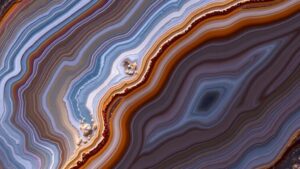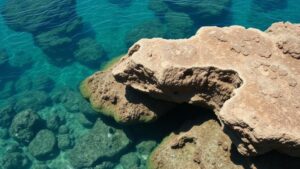Fossils for Home Décor: Turning Prehistoric Finds into Interior Design Pieces
Fossils for Home Décor: Turning Prehistoric Finds into Interior Design Pieces
Fossils have long captivated the imagination of humans, serving as tangible links to the Earths ancient past. As more individuals embrace unique décor pieces that blend aesthetics and history, the demand for fossil-inspired home décor is surging. For rockhounds and mineral collectors, integrating fossils into interior design offers an opportunity to showcase their passion while enhancing their living spaces. This article explores how to integrate fossils into home décor, backed by scientific data and practical tips.
Understanding Fossils: An Overview
Fossils are the preserved remains or traces of organisms from the past, typically millions of years old. The process of fossilization often occurs through mineralization, where organic material is replaced by minerals over time, resulting in stunning geological formations. There are various types of fossils, including:
- Body Fossils: Actual remains of an organism, such as bones, shells, and teeth.
- Trace Fossils: Indications of an organisms presence, like footprints or burrows.
- Coprolites: Fossilized feces that provide insights into an organisms diet.
Fossils are categorized by their age, type, and methods of preservation. For example, trilobite fossils, which are remnants of extinct marine arthropods, can be found in sedimentary rocks dating back hundreds of millions of years. Knowing the type and age of fossils can enhance their value as décor items and provide intriguing conversation starters.
Selecting the Right Fossils for Home Décor
When incorporating fossils into interior design, it is essential to choose pieces that complement the overall aesthetic of the space. Here are some criteria to consider:
- Size: Larger fossils, like dinosaur bones or ammonites, make striking focal points. Smaller pieces, such as polished stone fossils, can punctuate a bookshelf or side table.
- Color: Fossils come in varied colors depending on their mineral composition. Choose colors that harmonize with existing décor, such as earthy tones for a rustic vibe or polished specimens for a modern look.
- Rarity: Unique or rare fossil specimens can serve as statement pieces and hold higher value. This factor can be significant when selecting items for display.
Incorporating Fossils into Interior Design
There are several ways to display fossils in your home, each offering a distinct flair:
- Wall Art: Mounting fossils in shadow boxes or frames can create a gallery-style setup that inspires awe. A series of smaller fossils can serve as a beautiful focal point in a hallway or office.
- Table Centerpieces: Use larger fossil specimens as centerpieces on dining tables or coffee tables. Pair them with complementary items, such as candles or plants, to enhance the overall visual appeal.
- Bookshelves: Fossils can add texture and interest to bookshelves. Consider using books to anchor fossils or placing them on stands for emphasis.
- Functional Accessories: Items like fossilized wood can be transformed into coasters or tabletops, allowing you to enjoy the beauty of fossils while utilizing them functionally.
Cleaning and Maintaining Your Fossil Collection
Proper care is essential for maintaining the integrity and appearance of fossil specimens. To ensure longevity, consider the following tips:
- Avoid Direct Sunlight: Prolonged exposure can fade colors and damage the fossil.
- Use Gentle Cleaning Methods: Avoid harsh chemicals. A soft brush can remove dust, while natural soap can help clean more stubborn residues.
- Correct Humidity Levels: Maintaining stable humidity can prevent cracking. Aim for a range of 40-60% relative humidity.
Real-World Applications in Home Decor
Collectors and designers have discovered the versatility of fossils in various settings. For example, high-end hotels and restaurants have started incorporating fossil décor into their designs to create exclusive, intriguing environments. Also, private homes featuring open-concept layouts have utilized large fossil pieces to define spaces effectively without compromising the flow.
Fossil specimens can also be integrated into educational settings, such as museums or schools, serving as tools for hands-on learning about natural history. Schools may host workshops that encourage students to create art using fossil impressions, merging creativity and science.
Conclusion: Fossils as a Unique Design Element
Fossils are not merely remnants of the past; they can also serve as captivating interior design elements that reflect both personal interests and a scholar’s appreciation of natural history. By thoughtfully selecting, incorporating, and maintaining fossil specimens in home décor, rockhounds and mineral collectors can create meaningful spaces that spark interest and awe. Whether as focal points or subtle accents, fossils enrich the aesthetic and narrative of any interior setting, connecting modern living with a deep-seated heritage.
In summary, be mindful of size, color, rarity, and care while sourcing and displaying fossils as part of your décor. Let your passion for geology translate into spaces that are innovative, educational, and uniquely personalized.



